This was published 8 months ago
The historical planning quirk that means only single dwellings are allowed in this suburb
European migrants fled the inner city for the big blocks of Reservoir. Now, “Rezza” is considered cool – just make sure you say it right.
By Tom Cowie
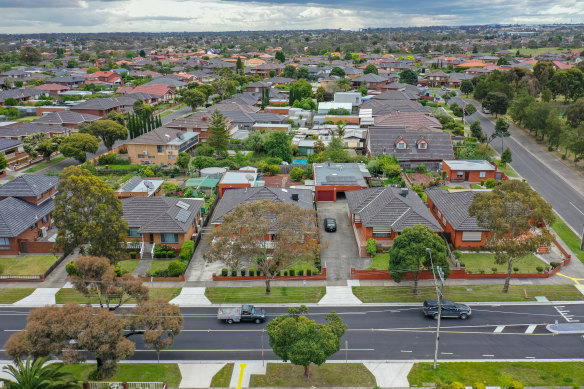
The houses (and satellite dishes) of Merrilands Estate in Reservoir.Credit: Justin McManus
Not that many suburbs have a distinct architectural style. But if you drive down Massey Avenue in Reservoir, you know you couldn’t be anywhere else in Melbourne.
House after house, all with the same features: bricks in various shades of orange and brown, aluminum shutters on the windows, concrete driveway to the side, white pillars at the front.

Dressmaker Connie Cantone-Matarazzo lives on Massey Avenue in Reservoir.Credit: Justin McManus
In the large backyard, there’s almost definitely a veggie garden with a lemon tree. On the roof, there might be a large satellite dish capable of picking up channels from Rai Italia (or the moon). The garage likely has a second kitchen to keep the home smelling and looking clean.
“People in Reservoir really take pride in their house,” says local Daniel Mancuso, who documents Reservoir life through his Yiayia Next Door Instagram page (yiayia is grandmother in Greek).
“I think it’s just the way they were brought up, they look after their things. They are keeping it clean to last, hopefully for their lifetime.”
Melbourne’s northern suburbs have experienced waves of gentrification recently – real estate agents have gone from marketing Thornbury as the new Northcote, to selling Preston as the new Thornbury.
And Reservoir – at 18.86 square kilometres, one of the biggest suburbs in Melbourne – is certainly not immune to this sweep of change, as people are pushed further north into its wide expanses by rising property prices.
There’s even a suggestion that Reservoir is cool now (or at least some pockets), with the bespoke bars, hipster cafes and fancy restaurants that bring that reputation.
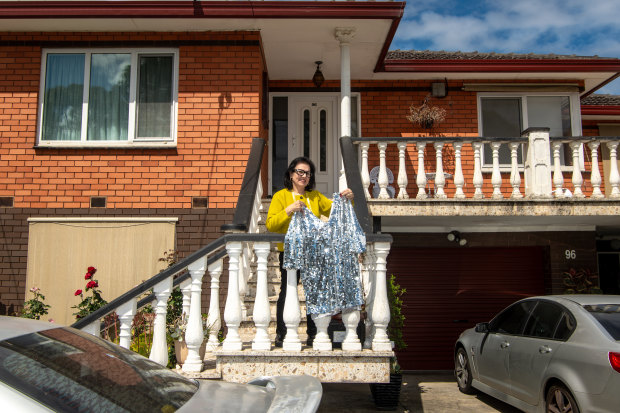
Connie Cantone-Matarazzo’s house is classic Reservoir.Credit: Justin McManus
But in this corner of Reservoir, past Edwardes Lake and near Thomastown, what some locals might call “deep Rezza”, very little has changed. There’s a reason for that.
Thousands of properties in Reservoir’s north-west have restrictions on redevelopment, a planning wrinkle dating back to its original subdivision as the “Merrilands Estate” in 1919.
Back then, two entrepreneurs named Thomas Michael Burke and Patrick
Deane purchased 1119 acres (450 hectares) of land, subdividing it into more than 3000 lots.
Included on the title was a covenant that prevented owners from building more than a single dwelling on each property to protect the amenity and character of the neighbourhood.

A 1920s map of the Merrilands Estate subdivision in Reservoir. Credit: State Library of Victoria
Owners who want to subdivide have since fought this “single dwelling” restriction, sometimes all the way to the Supreme Court. A single objection from a neighbour is usually enough to stop a planning application at council level, forcing it into the courts.
“It is the largest network of covenants in Victoria,” says barrister Matthew Townsend, an expert on such planning matters.
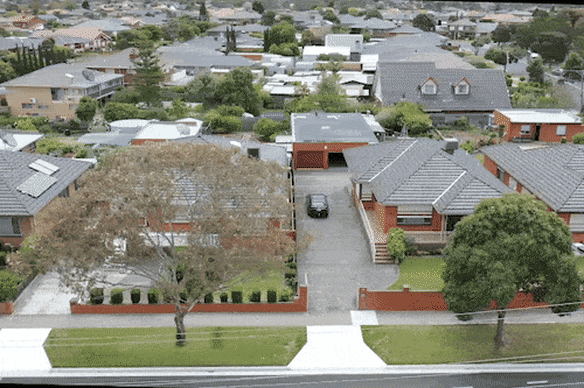
Massey Avenue in Reservoir.Credit: Justin McManus
This lack of development has left it as an area preserved in amber-coloured brick – and seemingly at odds with the housing crisis that has dominated political attention recently.
Premier Jacinta Allan says she wants to make Victoria the “townhouse capital” of Australia, but they hardly exist here.
Most of the houses date back to the post-war era, when Italian and Greek migrants fled the cramped terrace houses of the inner-city searching for bigger blocks up north.
In 1971, 22.7 per cent of the people in the Preston council area (now City of Darebin), taking in Reservoir, were born in Europe.
Many built homes themselves, or got mates in on the tools to help. In the early days, there was a family-friendly vibe. Over the years, the demographic has aged – the mammas became nonnas – as the kids moved out to other parts of Melbourne.
But often, they return. Connie Cantone-Matarazzo, 65, grew up in Reservoir after her Italian immigrant parents moved the family of four daughters out of a small single-fronted house in North Melbourne.
Later, she ended up in Mill Park, before moving back to a double-storey brick house on Massey Avenue about 15 years ago.
Her husband, Carmelo, has just finished putting in the tomatoes – as most green thumbs know, Melbourne Cup Day is the cut-off point for planting.
“I remember one of my ex-bosses called it a very ‘wog’ street,” she says.
“But I like it because it’s full of Italians and Greeks. I feel very comfortable in Reservoir. I always wanted to come back.”
‘Vore’ or ‘vwah’
Before we go any further, it’s probably best we address a significant point: how to pronounce “Reservoir”.
Robert Hoddle (of the eponymous grid) first surveyed the area in 1837, but the suburb later got its name from the dams that were built in 1864 on the pipeline from the Yan Yean reservoir to Melbourne.
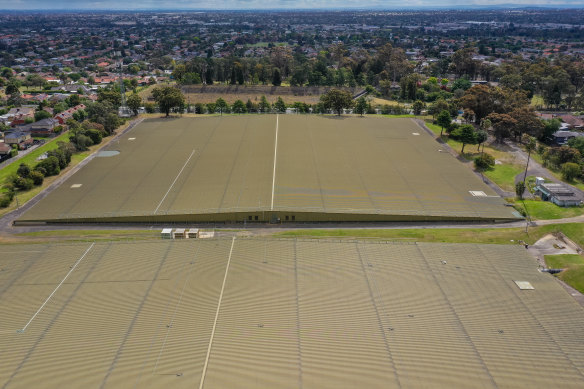
The reservoirs from which the suburb gets its name (just make sure you say it right).Credit: Justin McManus
Water was equally important to the Woi-wurrung-speaking Wurundjeri tribe of the East Kulin Nation, who inhabited the grasslands for thousands of years before white settlement because of its proximity to the Merri and Darebin creeks.
People who have never been here before would almost certainly say its name like this: reser-vwah. As in the French word for storage place.
Of course, they would be wrong and have an imaginary signpost on their heads that they are interlopers. The correct way to say it is phonetically: reser-vore. Much less fancy but a nod to the area’s blue-collar roots, when the sweat of its brow fed the factories of Melbourne’s industrial and manufacturing heartland.
For much of its existence, Reservoir has been among the poorer parts of Melbourne – although that is changing slowly. In 2006, the household weekly income was $737 (32.9 per cent lower than the national average); in 2022, it was $1541 (12.5 per cent lower).
“It’s traditional working-class pronunciation,” says Melbourne University linguist Professor John Hajek, of the reason for “vore” over “vwah”.
Lefa Singleton Norton, a fourth generation northern suburbs resident, took great delight in her partner Tim, from Melbourne’s south-east, saying Reservoir incorrectly the first time.
“He now closely guards the exact same thing,” she says.
“I’m in favour of polite reminder. We understand it’s wrong, but we say it anyway. It’s a real marker. It definitely tells you who’s been here and who had connections before they got here.”
One of the biggest recent changes to Reservoir, according to Singleton Norton, 44, has come from removal of the train level crossing by the Labor government in 2019.
For decades, Reservoir was essentially cut in half by the Mernda railway line (formerly the Lalor, then Epping, then South Morang line).
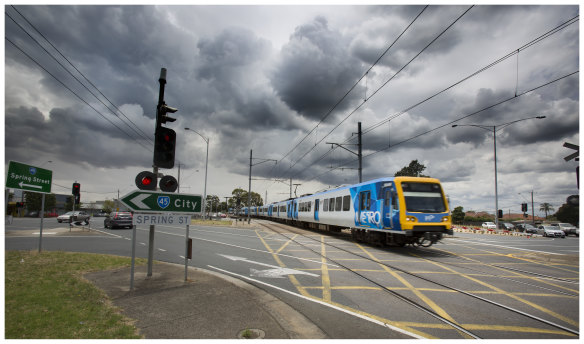
The Reservoir boom gates before they were taken away.Credit: Simon O’Dwyer
For a suburb that is four kilometres long from north to south, there was only one passage across: through a set of boom gates at a complicated intersection that brought together Cheddar Road, High Street and Spring Street.
To be stuck at that spaghetti junction when a train was going through could mean an interminably long wait.
“You could literally be there for 20 minutes. I think the worst day was, like 35 minutes during peak hour,” says Singleton Norton. “It was an actual barrier in the suburb.”
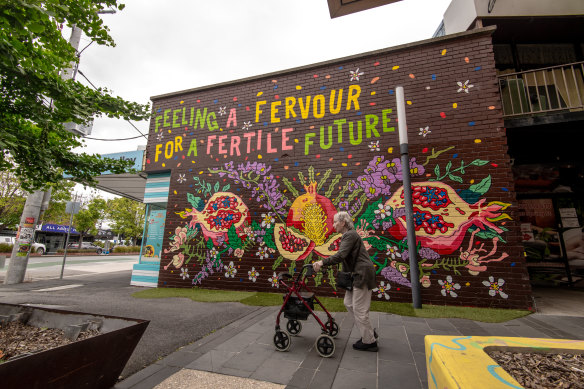
A mural in Edwardes Street, Reservoir by Texta Queen.Credit: Justin McManus
That separation created a rivalry between those who lived on different sides of the train tracks. But this disconnect still persists even after the level crossing was removed.
In an unusual quirk of commerce, Reservoir has two neighbouring shopping strips on Broadway and Edwardes Street to cater for residents living in the east and west.
Locals reckon they have different vibes and usually prefer one over the other (although there are some commonalities: the Edwardes Street side has a shop called “Mostly $2”, on Broadway there is the “$2 Broadway Variety Store”.)
The streets were forever split by the Reservoir railway station, which sat in the middle, and traders hoped that the level crossing removal would link them together by fully elevating the track and station.
However, the untangling of the junction never happened – the $232 million budget did not include road upgrades.
“Having the street connected all as one would have been a lot better,” says Annita Consiglio from Il Pasticcino, a well-known pastry shop serving ricotta cannoli and other treats on Edwardes Street since 1988.
“There hasn’t been really much change. I know the traffic’s probably a lot better but I think it’s still the same for us.”
Another item on the infrastructure wishlist is the extension of the route 11 tram on Gilbert Road through to central Reservoir.
Then-Labor leader Bill Shorten promised $40 million in 2018, but it would not have covered the entire route favoured by the council (and he lost the election anyway).
There is also a fierce local debate about an upgrade of the ageing Reservoir Leisure Centre.
While the Northcote Aquatic and Recreation Centre was just rebuilt at a cost of $63.5 million, Reservoir will wait at least another 10 years.
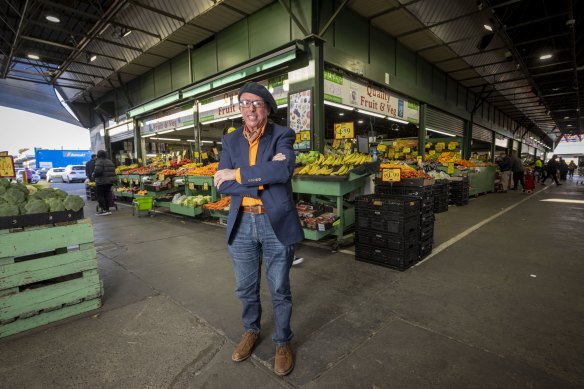
Darebin councillor Gaetano Greco.Credit: Wayne Taylor
Gaetano Greco, a long-time independent Darebin councillor representing Reservoir, says the area has been taken for granted politically.
He points to Labor’s battles with the Greens closer to the city in the federal seat of Cooper and the state seat of Northcote.
“It’s been a strong Labor heartland, one of the safest seats in Melbourne,” he says.
“As a result of that, we’ve seen more investment south of Bell Street.”
But he sees change happening – the state seat of Preston is now on a 2.9 per cent margin.
“We shouldn’t get more because it’s marginal. It should be because we’ve missed out and because we deserve it.”
It’s cool now?
For those who remember the old Reservoir, it must have seemed extremely unlikely that it would ever become trendy to live there.
Even at 12 kilometres from the city, it felt like a long way out of Melbourne, particularly the nightlife hotspots of Carlton, Fitzroy and Northcote.
But there are signs that Melbourne’s latte line (it should probably be called the “batch brew border” these days) is creeping slowly into Reservoir.
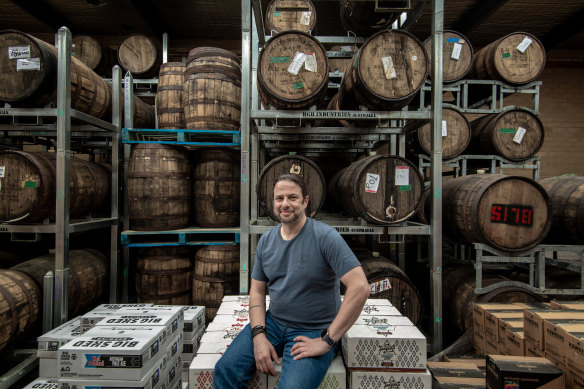
Mazen Hajjar from Hawkers Beer in Reservoir.Credit: Justin McManus
For a long time, Bell Street in Preston was seen as the natural end point where the tide of gentrification ended. But rising real estate prices have left people moving even further north.
Mazen Hajjar, founder of Hawkers Beer, recalls the pushback he experienced when setting up his brewery in a warehouse in Reservoir’s industrial area 10 years ago.
“The minute I signed the lease, everyone was like, ‘What the f--k are you doing in Reservoir?’,” he says. “Now we’re in the cool neighbourhood.”
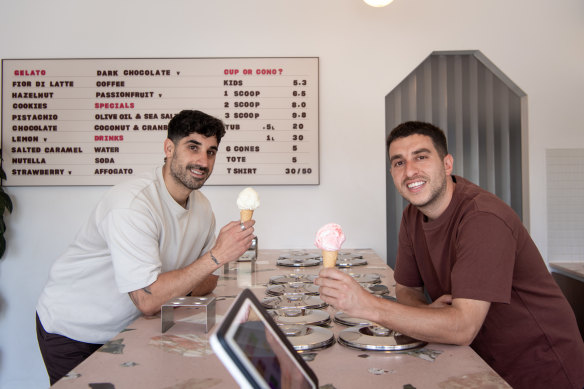
Daniel Mancuso of Yiayia Next Door, with Daniel Gagaro, part owner of Cono Gelateria.Credit: Justin McManus
The proof is in the brewing. Another beer maker, La Sirene, has followed Hawkers north, taking its wild ales from Alphington to Reservoir.
Another favourite attracting people in from across town is Cono Gelataria on Gilbert Road.
As well as the traditional varieties, the popular ice cream shop has started a community series, which brings in residents and schools to collaborate on flavours.
This year, Preston Primary School came up with raspberry Biscoff, while Yiayia Next Door collaborated on a galaktoboureko flavour inspired by the Greek custard pastry.
These days, Reservoir’s diversity has expanded to include people from other cultures, like those born in India, China and Vietnam.
“It’s definitely got that real community feel,” says part-owner and Reservoir local since birth Daniel Gagaro, 33.
“Every time I drive through Reservoir, from leaving the shop to my home, it reminds me of where I am, and why the area is so special to me.”
Adam Racina, 34, says he could never imagine opening a restaurant in Reservoir when he was growing up in nearby Preston.
“I just thought there’s no way I would do that,” he says. “You used to have to go to Northcote for a good coffee.”
After opening in 2020, Racina’s Spanish-style eatery and bar, La Pinta, on High Street is one of the standouts among a new generation of restaurants.
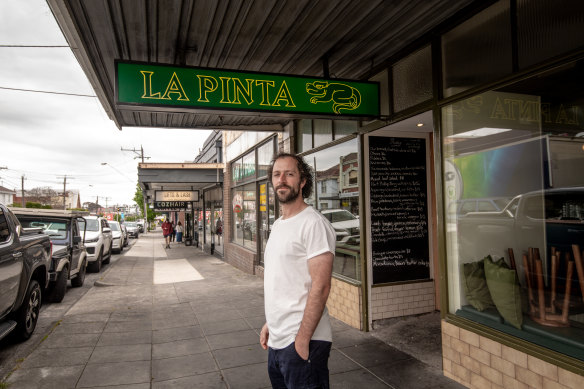
Adam Racina, owner of La Pinta in Reservoir.Credit: Justin McManus.
The reception has been so positive he recently started a sister venue, Sardinas, across the road. He says his concept is to provide quality food at an accessible price.
“The demographic when we opened did surprise me,” he says.
“The number of people of my generation, millennials, that had moved back to Reservoir seeking cheaper rent or more space.”
Despite all its changes, there’s a belief that Reservoir mustn’t lose too much of its old-fashioned charm. That includes the brown brick houses on Massey Avenue.
“I wouldn’t be surprised if in the future that type of architecture becomes something to protect,” says Greco.
“It actually signifies a certain lifestyle: family oriented, the big backyards, the cultivation that took place. It’s a whole way of living.”
Start the day with a summary of the day’s most important and interesting stories, analysis and insights. Sign up for our Morning Edition newsletter.